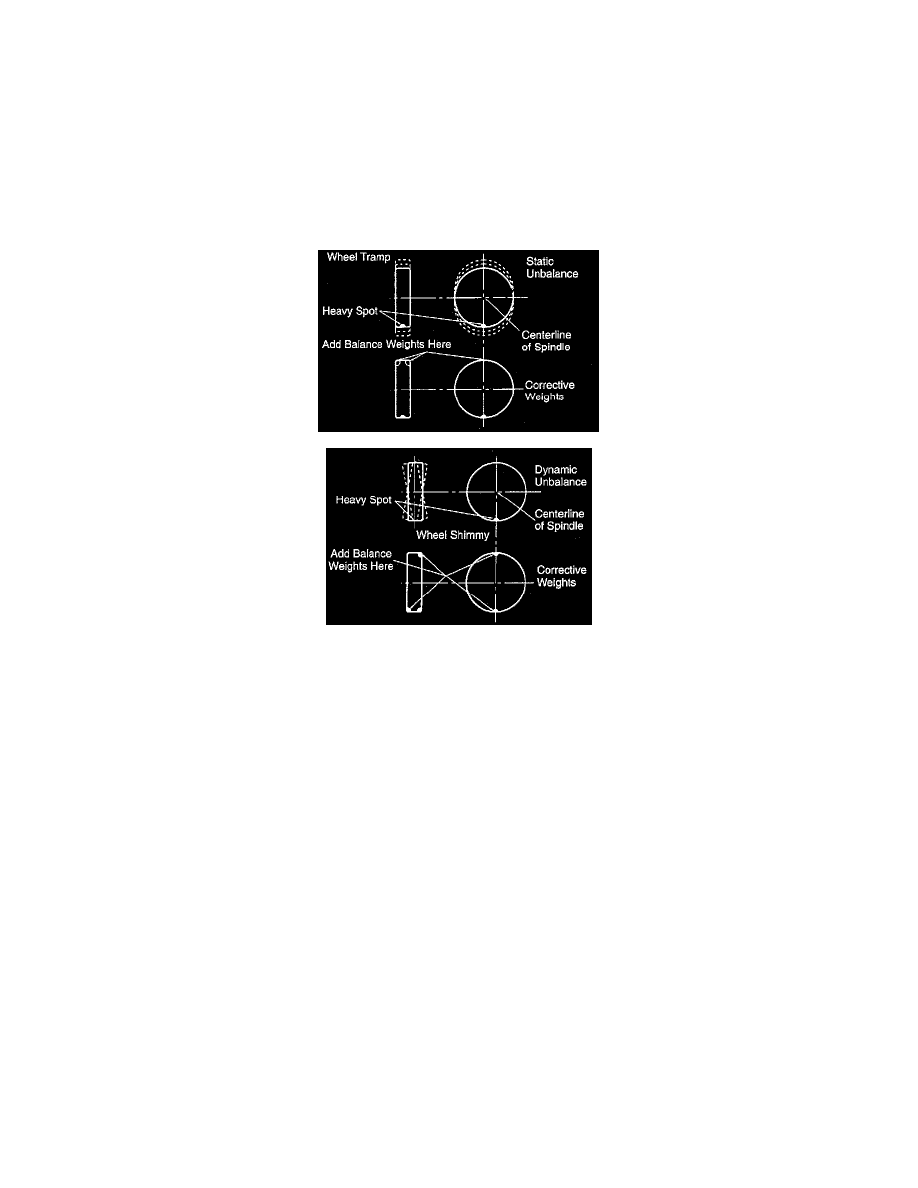Sportage 2WD 4Dr L4-2.0L (2000)

Wheels: Service and Repair
Tire and Wheel Balance
If a tire-wheel assembly becomes unbalanced or a tire is repaired or replaced, the tire-wheel assembly must be balanced to specification.
Unbalance at rim edge: 0.71 oz (20 grams) maximum
There are two basic types of tire and wheel balance: static and dynamic;
1. Static balance is the equal distribution of weight around the wheel. Statically unbalanced wheels cause a bouncing action called wheel tramp.
This unbalanced condition causes uneven tire wear.
2. Dynamic balance is the equal distribution of weight on each side of the centerline. When the tire-wheel turns, there is a tendency for the
assembly to move from side to side (wobble). Dynamically unbalanced wheels can cause wheel shimmy.
Use commercial wheel balancing machines, and follow manufacturer's instructions regarding operation and safety Ensure that all foreign material
is removed from the tire-wheel assembly before starting the balancing procedure.
NOTE: Comply with the following precautions when balancing a tire-wheel assembly.
1. Do not use more than two balance weights on the inner or outer side of the wheel.
2. If the total weight required exceeds 3.5 oz (100 grams), move the tire to a new position on the rim, then balance the tire-wheel assembly again.
3. Attach balance weights securely to the wheel.
4. Make sure the balance weights are suitable for the aluminum wheel.
